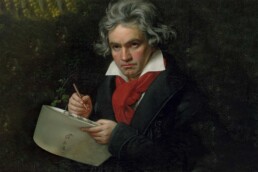Nestled deep within the annals of various cultural and spiritual traditions lies a mystical realm known as Shambala. Veiled in mystery and shrouded in myth, Shambala transcends geographical boundaries, weaving its narrative through the tapestry of human consciousness.
From the Himalayan peaks to the steppes of Central Asia, and beyond, the allure of Shambala has captured the imaginations of seekers, scholars, and storytellers alike. In this exploration, we embark on a journey through the cultural trail of Shambala, unraveling its rich tapestry of meanings, interpretations, and significance across different societies and epochs.
Mythical Origins and Interpretations
To comprehend Shambala, one must delve into its mythical origins, which are as diverse as the cultures that have embraced its legend. In Tibetan Buddhism, Shambala is envisioned as a hidden kingdom, a sanctuary of wisdom and enlightenment ruled by benevolent kings known as Chakravartins. According to Tibetan texts like the Kalachakra Tantra, Shambala serves as a beacon of hope, a bastion against the forces of darkness and ignorance. Its inhabitants, the Shambalians, are said to be enlightened beings who safeguard the ancient teachings and await the emergence of a future savior, the Kalki King, who will usher in a golden age of peace and harmony.
Across the vast expanse of Eurasia, similar narratives of a paradisiacal realm abound. In Hindu mythology, Shambala is associated with the concept of Shambhala, a celestial abode of immortality and spiritual transcendence. The Rigveda, one of the oldest scriptures of Hinduism, mentions Shambhala as a sacred place of abundance and bliss, inhabited by divine beings and accessible only to the pure-hearted and worthy.
Cultural Depictions and Inspirations
The allure of Shambala extends far beyond the confines of religious doctrine, permeating the realms of literature, art, and popular culture. Throughout history, poets, philosophers, and visionaries have drawn inspiration from the enigmatic allure of this mythical realm, infusing their works with its timeless symbolism and metaphorical resonance.
In the literary sphere, Shambala has served as a literary motif in works ranging from James Hilton’s “Lost Horizon” to Jorge Luis Borges’ “The Lottery in Babylon.” These narratives often portray Shambala as a utopian enclave, a sanctuary for the weary traveler seeking refuge from the tumult of the world.
Similarly, in the visual arts, Shambala finds expression through intricate mandalas, vibrant thangka paintings, and mystical sculptures. These artistic representations not only capture the architectural splendor of Shambala but also evoke its spiritual essence, inviting viewers into a realm of transcendence and enlightenment.
Relevance and Resonance in Modern Times
In an age marked by geopolitical strife, environmental degradation, and social upheaval, the myth of Shambala holds particular resonance. Across cultures and continents, individuals are drawn to the timeless promise of Shambala—a promise of peace, harmony, and collective awakening.
Moreover, the concept of Shambala has found new currency in the realm of ecological activism and sustainable living. Many environmentalists and spiritual leaders invoke the imagery of Shambala as a metaphor for a more harmonious relationship between humanity and the natural world. In this vision, Shambala represents not merely a distant utopia but a tangible blueprint for cultivating compassion, stewardship, and ecological balance.
A Timeless Archetype
In the tapestry of human culture, Shambala emerges as a timeless archetype—a symbol of our collective yearning for transcendence, renewal, and harmony. Whether as a mythical kingdom nestled amidst snow-capped peaks or an allegorical haven of spiritual enlightenment, Shambala continues to captivate our imagination and inspire our quest for a better world. As we traverse the cultural trail of Shambala, we are reminded of the enduring power of myth to illuminate the human experience and beckon us toward a brighter, more compassionate future.

